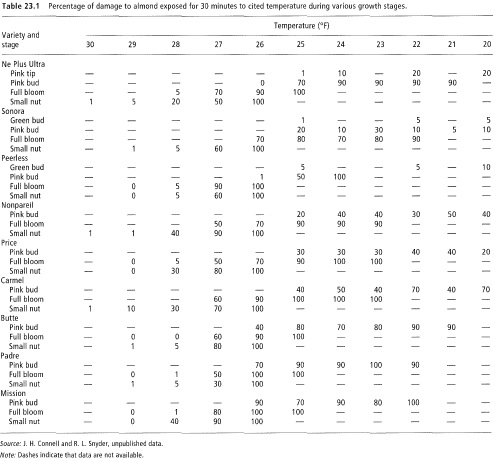by David Doll – UCCE Farm Advisor
There is a frost risk for the next few nights with temperatures dropping into the high 20’s and maybe lower. If these forecasts are true, crop loss could be experienced within colder areas of almond orchards.
As written previously, there are some tasks that can be performed to help reduce the risk of frost damage. These include mowing the cover crop or residual vegetation to allow radiant heat form the soil to move into the canopy, use of sprinkler systems to apply water which warms the orchard, or utilization of equipment or fans to help move warmer air into the orchard. All of this is to help increase orchard temperatures by 2-3 degrees.
The risk of frost increases as almonds break dormancy and begin development. Dormant buds are relatively tolerant to freezing conditions, but sensitivity increases as flowers develop from pink bud to full bloom, then into nutlets. The following figure selected from “The Almond Production Manual,” developed by Joe Connell and Richard Snyder, demonstrates the change in sensitivity. Essentially, sensitivity does vary slightly by variety, but a 50% or greater of crop loss can be experienced during bloom when temperatures drop to 27F for 30 minutes. After petal fall, this temperature threshold increases to 28F. Colder temperatures can cause significant crop loss….[Read the full article here]

